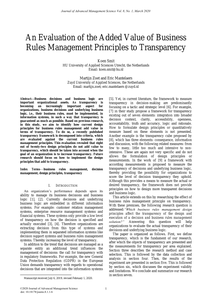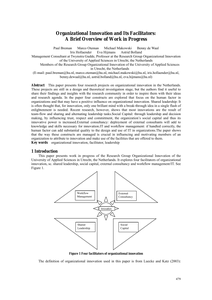This chapter discusses several aspects related to engineering methods in wind turbine design codes. Current engineering models for rotor aerodynamics topic are built around the Blade Element Momentum (BEM) theory. The Blade Element Momentum theory in itself is very basic, e.g., it is derived for two-dimensional, stationary, homogenous, and non-yawed conditions. For this reason, several engineering models have been developed which overcome these simplifications and which act as add-ons to the basic BEM theory. This chapter describes the BEM theory, the most important engineering add-ons, and an assessment of BEM with engineering add-ons with results from higher fidelity models and measurements.
LINK
BACKGROUND: Since the benefit-harm balance of adding inhaled corticosteroids to long-acting β2-agonists (LABA) and long-acting muscarinic antagonists (LAMA) for patients with chronic obstructive pulmonary disease is unclear, we evaluated this addition for a range of patient profiles. METHODS: Analyses considered the effects of low-to-moderate doses of inhaled corticosteroids, LABA, and LAMA compared with LABA and LAMA alone, outcome incidences, and preference weights assigned to averted moderate-to-severe exacerbations (benefit) and severe pneumonia, candidiasis, and dysphonia (harm). Using exponential models, we estimated the preference weight-adjusted 2-year net clinical benefit (ie, benefits outweighing harms) indices. Exacerbation risk thresholds for triggering inhaled corticosteroids, LABA, and LAMA were established when the probability of a 2-year net clinical benefit reached 60%. We estimated the proportion of patients benefiting from added inhaled corticosteroids using an externally validated prediction model for acute exacerbations in primary care. FINDINGS: Adding low-to-moderate dose inhaled corticosteroids to LABA and LAMA provided a net clinical benefit in patients with a 2-year baseline exacerbation risk of 54-83%. Low-dose inhaled corticosteroids showed a net clinical benefit if the baseline risk was 40-91%, but not at higher doses. The benefit was modified by blood eosinophil count (BEC) and age. Although no net benefit was associated with a BEC of less than 150 cells per μL, patients with a BEC of 150 cells per μL or more had a net benefit from low-dose inhaled corticosteroids with a 2-year exacerbation risk of 32-95% in those aged 40-79 years and 41-93% in those older than 80 years. A moderate dose of inhaled corticosteroids showed a net benefit in patients younger than 80 years with a BEC of 150 cells per μL or more at 52-86% 2-year exacerbation risk. Depending on the subgroups, the proportion of patients with a net benefit from added inhaled corticosteroids ranged from 0 to 68%. INTERPRETATION: The net clinical benefit of adding different inhaled corticosteroid doses to LABA and LAMA varies greatly with exacerbation risk, BEC, and age. Personalised treatment decisions based on these factors and predicted exacerbation risks might reduce overtreatment and undertreatment with inhaled corticosteroids.None.
DOCUMENT
Emotions are crucial ingredients of meaningful and memorable tourism experiences. Research methods borrowed from experimental psychology are prime candidates for quantifying emotions while experiences are unfolding. The present article empirically evaluates the methodological feasibility and usefulness of ambulatory recordings of skin conductance responses (SCRs) during a tourism experience. We recorded SCRs in participants while they experienced a roller-coaster ride with or without a virtual reality (VR) headset. Ride elements were identified that related to physical aspects (such as accelerations and braking), to events in the VR environment, and to the physical theming of the roller coaster. VR rides were evaluated more positively than normal rides. SCR time series were meaningfully related to the different ride elements. SCR signals did not significantly predict overall evaluations of the ride. We conclude that psychophysiological measurements are a new avenue for understanding how hospitality, tourism and leisure experiences dynamically develop over time.
LINK
Business decisions and business logic are important organizational assets. As transparency is becoming an increasingly important aspect for organizations, business decisions and underlying business logic, i.e., their business rules, must be implemented, in information systems, in such a way that transparency is guaranteed as much as possible. Based on previous research, in this study, we aim to identify how current design principles for business rules management add value in terms of transparency. To do so, a recently published transparency framework is decomposed into criteria, which are evaluated against the current business rules management principles. This evaluation revealed that eight out of twenty-two design principles do not add value to transparency, which should be taken into account when the goal of an organization is to increase transparency. Future research should focus on how to implement the design principles that add to transparency.
DOCUMENT

This study evaluated the Toddler Oral Health Intervention (TOHI) for preventing early childhood caries (ECC) by 48 months. TOHI, an add-on to standard care in well-baby clinics (WBCs), aims to reduce ECC incidence and severity.
MULTIFILE

The main goal of this study was to investigate if a computational analyses of text data from the National Student Survey (NSS) can add value to the existing, manual analysis. The results showed the computational analysis of the texts from the open questions of the NSS contain information which enriches the results of standard quantitative analysis of the NSS.
DOCUMENT

As societal discussions around housing and immigration continue to heat up in the Netherlands, internationalisation has found itself caught in the crossfire. Against a backdrop of changing policies and public sentiment, Simone Hackett of The Hague University of Applied Sciences invited one domestic student and one international student to add their voices to the debate.
DOCUMENT

Als studieboek is dit werk vooral bedoeld voor studenten en docenten van zowel bachelor- en masteropleidingen Nederlands van universiteiten als masteropleidingen van hogescholen. Delen van dit boek kunnen voor bachelor-opleidingen van die hogescholen gebruikt worden. Als naslagwerke is het bedoeld voor de specialisten. Het boek geeft een breed beeld van de materie door met het ontstaan en de groei door met het historisch-vergelijkend taalkundig onderzoek te beginnen en via het Indo-Europees en de taalveranderingen daarna, uit te komen op het zeventiende eeuws Nederlands. Maar waar ansdere handboeken dan ophouden, geeft dit boek een vervolg met drie hoofdstukken over de geschiedenis van het Nedersaksisch, het Brabants, Limburgs Vlaams en Zeeuws, en het Fries. De uitbreiding maakt het boek bijzonder ongeacht de doelgroepen. Het werk bevat tien hoofdstukken waarvan sommige voorzien zijn van vragenmateriaal. Ver is het boek rijk geillustreerd en is er aan het eind niet alleen een zeer uitgebreid trefwoordenregister opgenomen maar ook een verklarende lijst gebruikte taalkundige termen.
LINK
This paper presents four research projects on organizational innovation in the Netherlands. These projects are still in a design and theoretical investigation stage, but the authors find it useful to share their findings and insights with the research community in order to inspire them with their ideas and research agenda. In the paper four constructs are explored that focus on the human factor in organizations and that may have a positive influence on organizational innovation. Shared leadership: It is often thought that, for innovation, only one brilliant mind with a break-through idea in a single flash of enlightenment is needed. Recent research, however, shows that most innovations are the result of team-flow and sharing and alternating leadership tasks. Social Capital: through leadership and decision making, by influencing trust, respect and commitment, the organizations social capital and thus its innovative power is increased. External consultancy: deployment of external consultants will add to knowledge and skills necessary for innovation. IT and workflow management: if handled correctly, the human factor can add substantial quality to the design and use of IT in organizations. The paper shows that the way these constructs are managed is crucial in influencing and motivating members of an organization to attribute to innovation and make use of the facilities that are offered to them.
DOCUMENT
